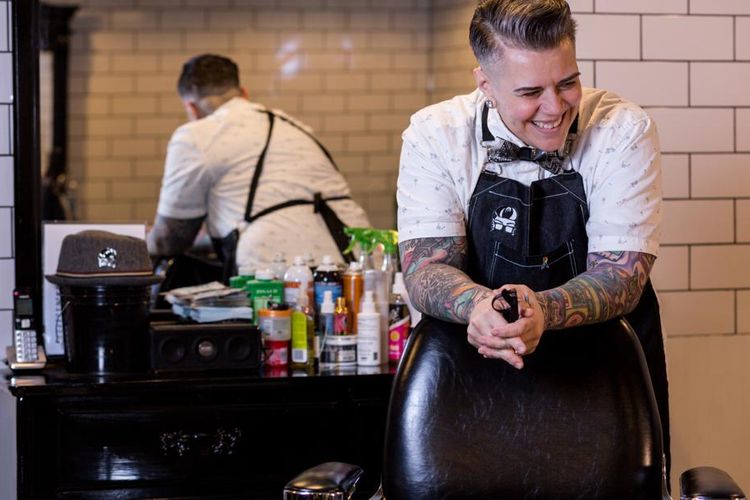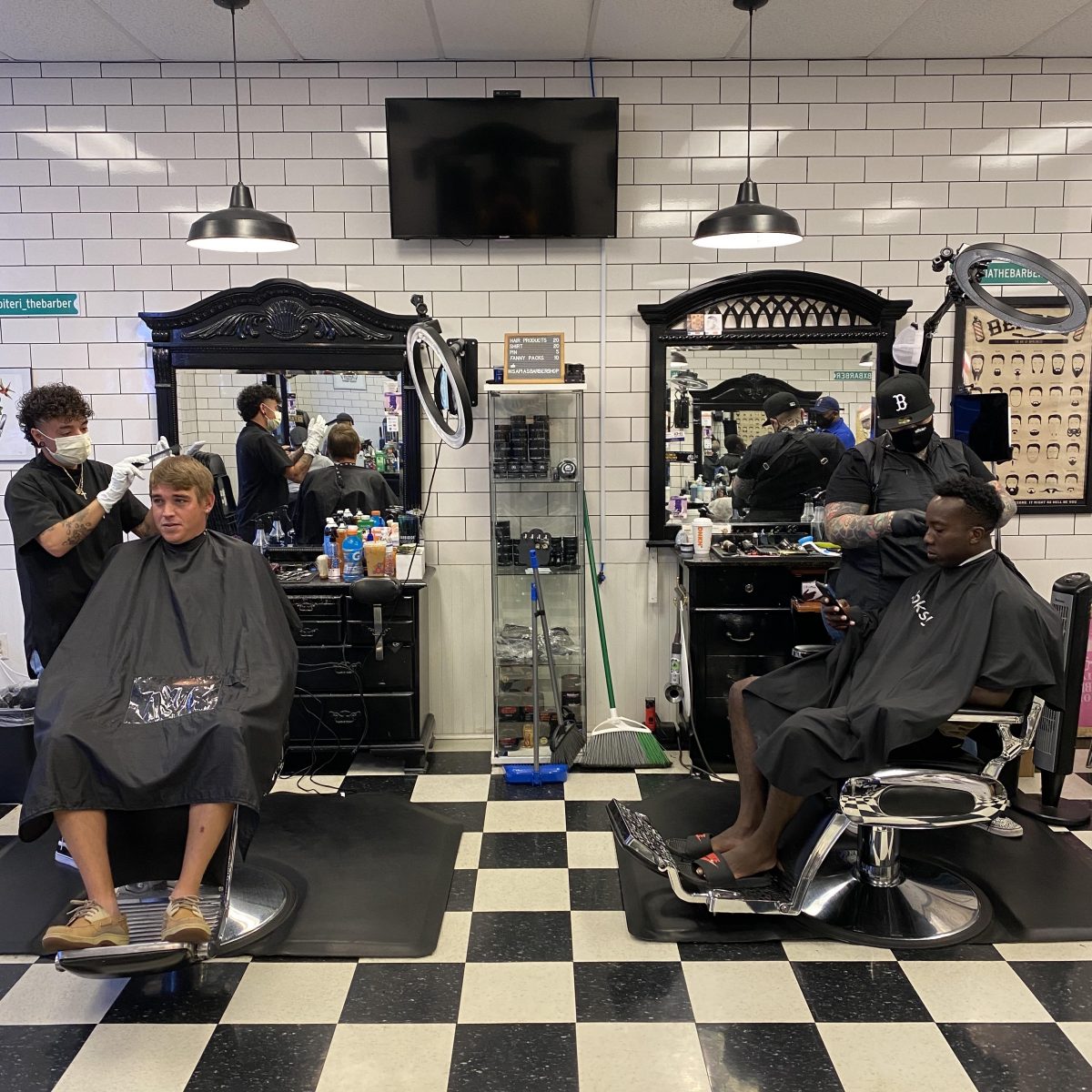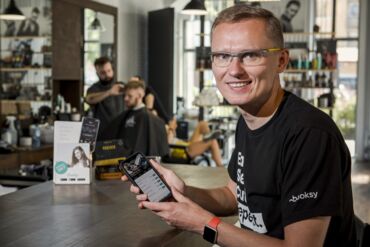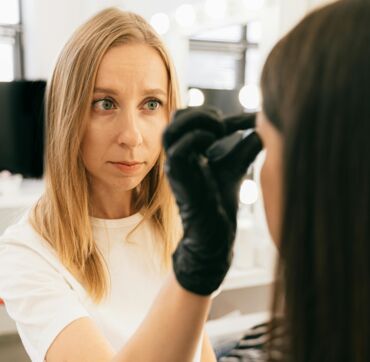Running a Business After the Shutdown
- All
- Booksy Biz
- Booksy Community
- Booksy Education
- Business Categories
- Business Tips
- Businesses/Owners
- Consumers
- Success Stories
- Uncategorized
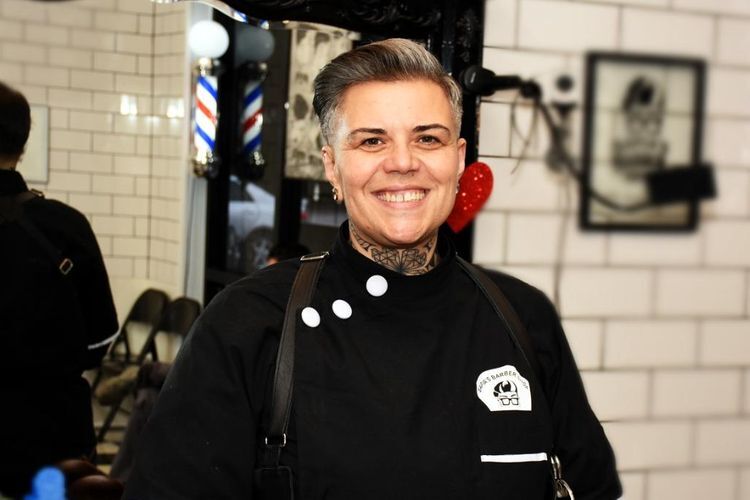
Running a business is tough—there’s financial risks, time commitments, and a host of people depending on you everyday, because you have to make sure that everything is going smoothly.
As the owner of both a salon and a barbershop, Tina Sapia knows this truth all too well. In addition to running two businesses, Tina is also a full-time baber and a Booksy Ambassador. So, it’s safe to say, her plate is pretty much always full.
But when Tina heard that she would have to close the doors to both of her businesses for a few weeks, because of the COVID-19 pandemic, her first thought was “how am I going to be able to keep all of my staffers without any customers?”
Keep reading to find out how this driven business owner kept her client base, became more tech savvy, and made absolutely sure that her workspace was up to code, so that she would be ready for the day that her two businesses could reopen their doors to the community.
Using Booksy to Communicate with Clients
For 44-year-old Tina, being the owner of a hair salon and a barbershop means spending almost every day surrounded by people who have become more like family members than friends. Tina owns Sapia's Barber Shop, along with Ciao Bella.
Both the salon and the barbershop are located right next to one other on the 1500 block of Sunset Point Road in Clearwater, Florida. Tina describes this city of about 116,000 people as a “close knit” group of progressively-minded individuals, who are very welcoming.
Because of that sense of community, Tina feels that it’s important to stay connected with her regulars. And when the news of the shutdown was made public, her first instinct was to use Booksy like never before to stay in-touch with her loyal customers.
Booksy helped Tina send detailed mass text messages, so she could communicate with all of her regulars and keep them informed about when she could reopen her doors. And Booksy let Tina and her staffers easily update their schedules, so clients could book weeks in advance.
“All of us were kinda scared. But we did it, we made it,” Tina said. “I tried keeping in contact with everybody, and I mean it made it easier with Booksy—honestly. Because we were able to still schedule appointments. We were able to open up and close our books, so when we heard ‘hey, they’re going to open up shops.’ Right away, we could open up our schedules.”
Making the Most Out of Booksy Biz Features
Although Tina mainly used Booksy to keep in touch with clients and then schedule their appointments ahead of time with ease, she became more familiar with other Booksy Biz features during the shutdown and directly afterwards, when she could reopen her businesses.
In particular, the Tip Now, Book Now, Visit Later feature really helped her financially by keeping her business afloat when her doors were closed. And it gave clients the chance to show their appreciation.
“People were over-tipping, and people were giving extra money,” Tina said. “There was so much love.” She also added that “it’s like it’s your birthday, basically. Because they know you’ve been through it for the past month. And a lot of people were glad that we made it through.”
During her first week back in the shop, the Health and Safety Rules within the Booksy Biz app also really came in handy. This checklist is conveniently located in the app. Simply open a Booksy Biz account and select ‘Business Profile’ and click ‘Health and Safety Rules.’
“The COVID-19 checklist, that was very helpful, because up until that point, I knew what I needed, but I had never gone through this. So, to have a checklist there to kind of jog my memory let me say, ‘oh yeah that’s right, now we’re going to need this and we’re going to need that.' It was very helpful,” said Tina.
Another new feature that Tina has been relying heavily upon is the I’m Ready button. Tina said now that her doors are open, very few people can be in the shop at the same time. The I’m Ready button lets her inform clients who are waiting in their cars, when it’s their turn for a cut.
Pro-Tips to Business Owners
According to Tina, most of the other aspects to running her barbershop and salon fell into place quite naturally. But she still recommends the following important details to any business owner who is just reopening or still getting the hang of things.
First and foremost, she says business owners should schedule lots of additional time between appointments. What people should do is set a very specific time frame for their shop or salon at first and give staffers as much time as possible to clean between clients, she said.
Once the employees have had time to learn their steps, reduce or tweak that schedule as necessary. That will happen when everyone has found a rhythm and is able to ensure that everything is clean in an efficient amount of time.
But she warned that industry experts should be prepared for a financial hit. Even though her shop and salon are both open, each business suffers about 50% of losses in profits every day.
The additional time between appointments and the reduced number of people in the shop takes away from the amount of clients we can book in a day, she said.
Lastly, she advises anyone with questions about keeping their shop up to code with regards to sanitation to follow these recommended safety procedures while also recalling the information they learned in barber college or cosmetology school:
- Ask clients to wait outside in their cars before coming into the shop
- Make sure everyone inside wears gloves and a mask
- Provide additional masks and gloves
- Allocate lots of time between every appointment for cleaning and disinfecting
- Remove items that clients can touch
- Change capes and smocks after every appointment
- Leave additional hand sanitizer at every station
- Move chairs to make sure clients and staffers remain six feet apart

